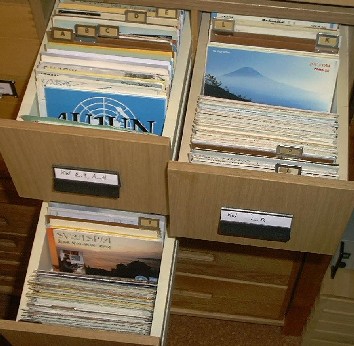
Radio amateurs carry on the tradition of using a QSL card as a confirmation of a contact with another amateur radio station. They say “a QSL is the final courtesy of a QSO” (2-way-connection). The QSL card contains some basic information – the station’s callsign, location, licensee’s name and postal address and often details about the equipment like transmitter, power, antennas, etc. It also includes details of the contact, the date, the time (usually in UTC), the radio frequency, the mode of transmission used and a signal report. Sometimes the QSL card shows a picture of the radio amateur’s shack or home town.
I collect QSL cards and am happy about every card I receive. Of course I confirm every initial QSO with my QSL-card via the QSL-bureau, as far as I have no information that no “paper-QSL” is desired. In addition, my log is uploaded mostly the same day to the “logbook of the world” (LoTW). The LoTW is a repository of logs, submitted by radio amateurs around the world. The diagram below shows a daily updated statistic of my QSOs and QSLs.
Note on QSL by email:
Recently, I have been receiving more and more QSLs by email. Thank you very much for that too! These email QSLs are of course also archived. I understand that some radio amateurs no longer want to print QSL cards out of concern for our environment. Unfortunately, email QSLs are not valid for the most prestigious and popular amateur radio awards such as DXCC, WAS, WAZ, IOTA or VUCC. Therefore, radio amateurs should also upload their QSO data to the “Logbook of the World” (LoTW) so that the resulting confirmations become valid like paper QSLs. Using LoTW is free. Many radio amateurs who send their QSLs by email also upload them to LoTW at the same time. How to get started is described on https://lotw.arrl.org/lotw-help/getting-started/. Popular logbook programs support uploading to LoTW in a simple way. Join in too!

